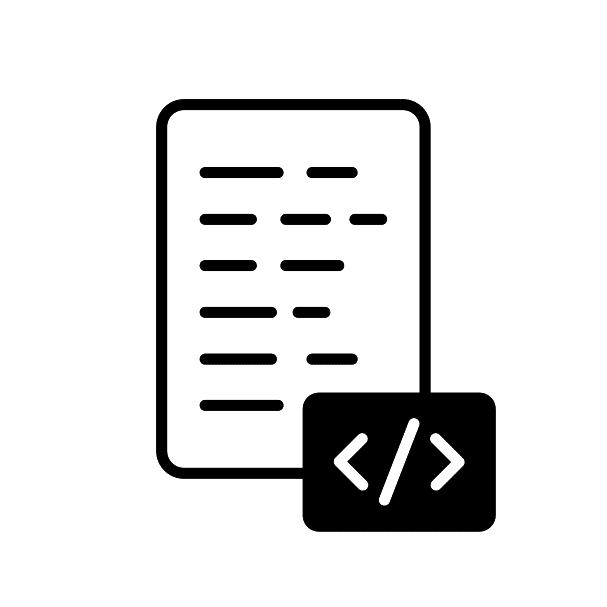Dive into machine learning with Python: Transform data into insights and predictions!

Nuestros profesores y tutores se graduaron de las mejores universidades.








Resumen

Plan de estudios de codificación personalizado
Seleccione los lenguajes de programación o temas que le interesen y lo emparejaremos con un tutor calificado para guiarlo hacia el dominio.

Lecciones de codificación flexible
Programe lecciones según su conveniencia, ya sea que desee una introducción rápida o una exploración en profundidad; la elección es suya.

Individualized One-on-One Instruction
Tu experiencia de aprendizaje se adapta a tu ritmo y nivel de dificultad preferido, garantizando un progreso constante sin la interferencia de distracciones o rivalidades.
Acerca de Python
Python has rapidly ascended the ranks to become one of the world’s most popular programming languages. Its simplicity and readability have made it the go-to language for many industries, not just limited to machine learning, data science, and artificial intelligence. The language is highly versatile, making it suitable for web development, automation, scientific computing, and even cybersecurity.
Un lenguaje universal
Major tech giants like Google, Facebook, and Netflix all utilize Python for a wide range of applications, from web services to data analysis and machine learning models. Google, for instance, employs Python for various critical systems, including their famed Google Search engine. Python’s built-in data structures, combined with its dynamic typing and binding, make it an excellent choice for rapid application development and scripting on almost any platform.
Beginner-friendly yet Powerful
What sets Python apart is its low barrier to entry for beginners. Its syntax is straightforward, allowing new learners to grasp the basics without getting bogged down by cumbersome language rules. Yet, its capabilities are anything but basic; Python provides a broad standard library that supports many common programming tasks such as connecting to web servers, searching text with regular expressions, and reading and modifying files.
Expansive Libraries and Frameworks
Python’s ecosystem is robust, comprising a wide array of libraries and frameworks that extend its capabilities even further. Libraries like NumPy and pandas are popular in data manipulation, while Matplotlib and Seaborn are frequently used for data visualization. In machine learning, libraries such as TensorFlow and scikit-learn have made Python the de facto language for building cutting-edge models.
Comunidad y colaboración
One of Python’s greatest strengths is its large and active community, which contributes to an ever-expanding selection of libraries and frameworks. The Python community also emphasizes collaboration and sharing, as seen through public repositories and a culture that encourages open-source contribution.
In summary, Python is not just a tool for developers; it’s a global phenomenon that has a role in shaping the future of technology. Its versatility and accessibility make it an invaluable asset for anyone looking to enter the field of computer science or enhance their technological skills.
Descripción
This course focuses on teaching students how to interpret data, identify inaccuracies, and modify it to enhance its accuracy and relevance.
Participants will learn when to apply techniques such as clustering, regression, or classification to ensure their algorithms gather the most precise data.
They will also acquire the skills to utilize predictive modeling, recommending other items people might be interested in based on historical data, akin to platforms like YouTube or Netflix.
Qué aprenderás...
- Grasp the principles of machine learning.
- Gain proficiency in clustering, regression, or classification methods using Python.
- Start developing a neural network.
- Master the skills to read and comprehend intricate data.
Requisitos
- Edad 13-18
- Conocimientos básicos de Python
- Capaz o dispuesto a comprender conceptos complejos.
- Interesado en la tecnología del futuro.
Resources: Student FAQs About AI with Python
Python’s simplicity and readability, along with its expansive ecosystem of libraries like TensorFlow, scikit-learn, and PyTorch, make it well-suited for AI development. Its flexibility allows for both quick prototyping and efficient production deployment.
Libraries such as scikit-learn provide pre-built algorithms for supervised and unsupervised learning tasks, while TensorFlow and PyTorch offer the building blocks to create neural networks, which are essential for deep learning tasks in AI.
Yes, Python has several libraries like NLTK and spaCy that are designed specifically for NLP tasks. These libraries can assist in sentiment analysis, text classification, and language translation, among other tasks.
Python’s AI libraries are often built on top of low-level languages like C or C++, which allows for computational efficiency. This is crucial for training complex models on large datasets, a common requirement in AI.
While Python itself may not be the fastest language, its integration with C/C++ and the ability to utilize GPUs make it a feasible option for real-time AI applications. However, the choice may also depend on the specific requirements of the project.
Python boasts an array of libraries such as NumPy, pandas, Matplotlib, and Seaborn that make data analysis and visualization straightforward. This is important in AI for feature engineering, model evaluation, and understanding data distributions.
¿Cómo funciona?
1
Solicitar un tutor
Háganos saber sus objetivos y rango de edad. Desarrollaremos un plan para ayudarle a llegar allí.
2
Emparejar con un tutor
Te recomendaremos un tutor en función de tus necesidades y objetivos, o puedes solicitar un tutor específico.
3
Iniciar una prueba gratuita
Experimente una lección de prueba gratuita con su nuevo tutor y vea si su estilo de aprendizaje coincide.
4
¡Seguid así!
Si todo ha ido bien, ¡regístrate para seguir adelante! Puedes elegir el ritmo de las lecciones.
¿Necesita más información?
Hablemos.
Deje su número de teléfono y le devolveremos la llamada para analizar cómo podemos ayudarle.


